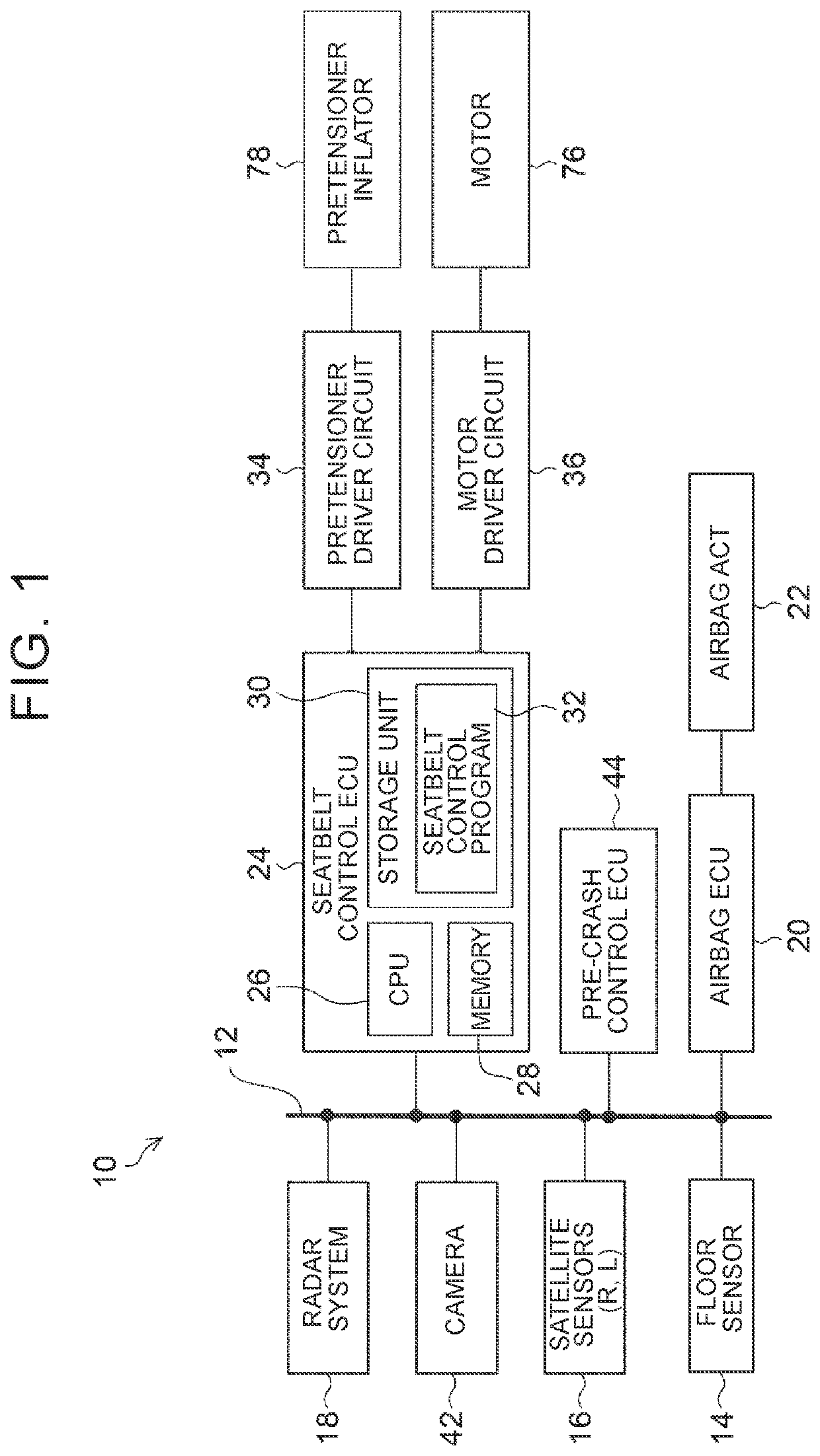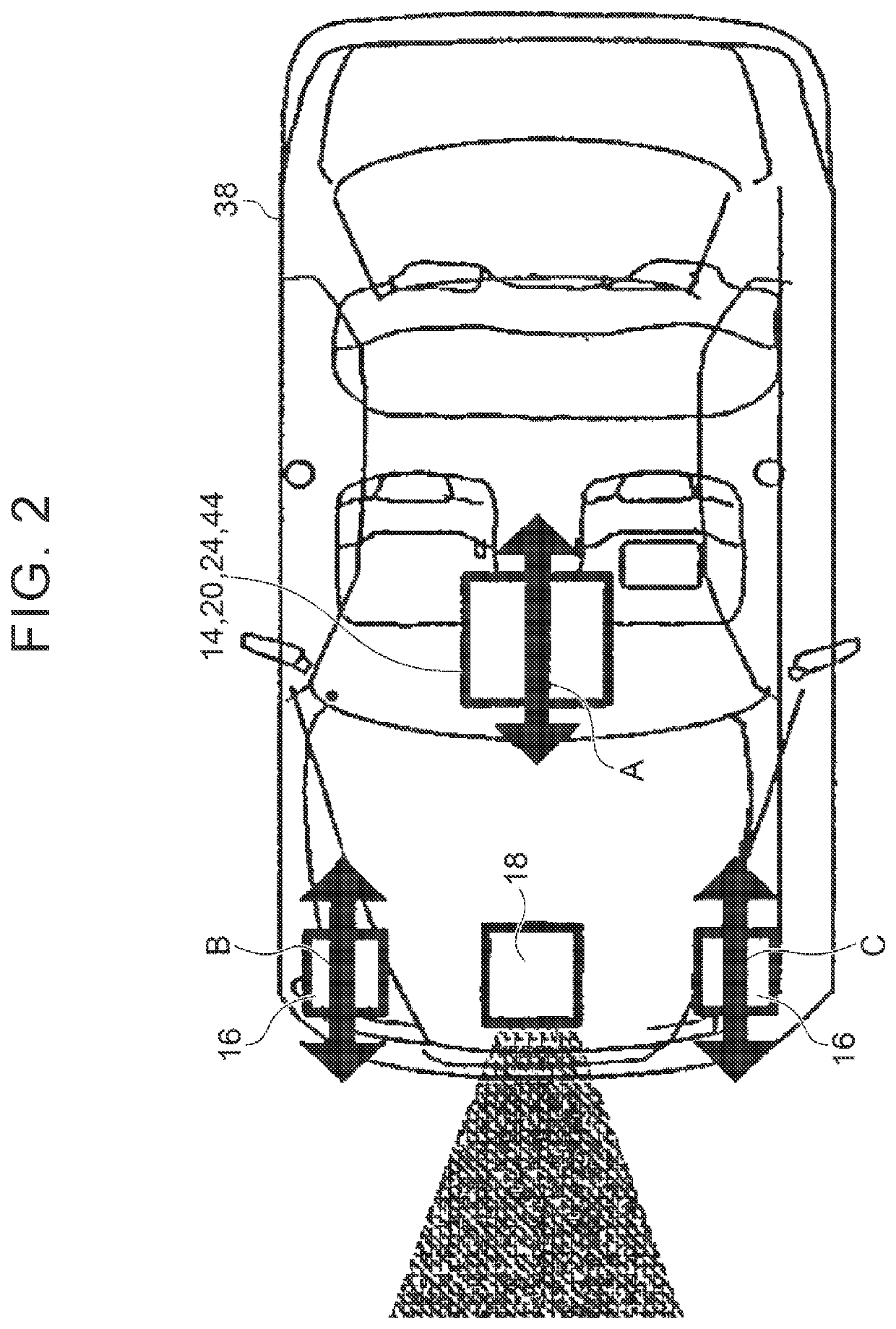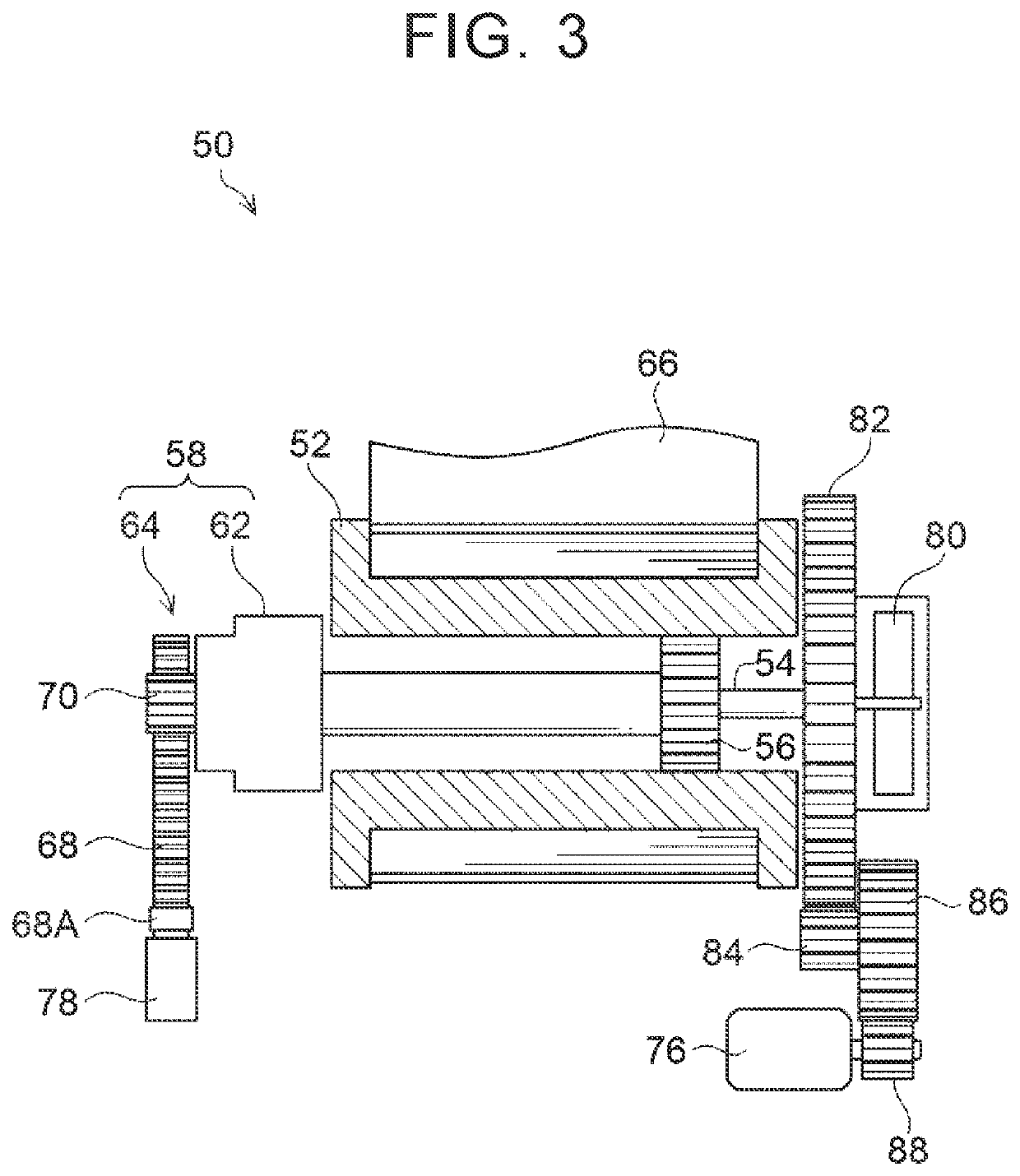Seatbelt system for vehicle, and control method for seatbelt system
a seatbelt and vehicle technology, applied in the direction of seatbelt control systems, vehicle components, vehicle safety belts, etc., can solve the problems of increased seatbelt tension, reduced torque required from the motor, and seatbelt slack, etc., to achieve a large current, increase the size of the motor, and generate high torque
- Summary
- Abstract
- Description
- Claims
- Application Information
AI Technical Summary
Benefits of technology
Problems solved by technology
Method used
Image
Examples
first embodiment
[0033]In the first embodiment, the floor sensor 14 is an example of a detector, and the seatbelt control ECU 24, the pretensioner driver circuit 34, and the motor driver circuit 36 are an example of an electronic control unit.
[0034]As shown in FIG. 3, a seatbelt take-up device 50 includes a spool 52 that takes up a seatbelt 66. The spool 52 is hollow at its center. A torsion bar 54 is provided in the hollow portion. The torsion bar 54 is coupled to the spool 52 via a coupling member 56 at a position shifted toward a spring mechanism 80 (described later) from the center of the spool 52 in an axial direction, and functions as the rotary shaft of the spool 52. The torsion bar 54 has different diameters on both sides of the coupling member 56. In the present embodiment, a pretensioner unit 58 side of the torsion bar 54 is greater in diameter than a spring mechanism 80 side of the torsion bar 54.
[0035]The torsion bar 54 may have a structure such that the spring mechanism 80 side and the ...
second embodiment
[0055]As shown in FIG. 6, a seatbelt control process proceeds to step 114 when the determination of step 106 is negative. In step 114, the seatbelt control ECU 24 determines whether a predetermined time t1 has elapsed from when the collision has been detected (from when the determination of step 104 is affirmative), step 114 is repeated until the determination is affirmative. As an example, as shown in FIG. 5, a time corresponding to a time required from occurrence of a minor collision until the deceleration G reduces to less than or equal to the second threshold Gth2 is set for the predetermined time t1.
[0056]When the predetermined time t1 has elapsed, the determination of step 114 is affirmative, and the process proceeds to step 118. In step 118, the motor 76 is driven in the direction to take up the seatbelt 66. In this stage, the tension of the seatbelt 66 has been reducing, and the motor 76 is able to take up the seatbelt 66 with a low torque. Therefore, an increase in the siz...
PUM
 Login to View More
Login to View More Abstract
Description
Claims
Application Information
 Login to View More
Login to View More - R&D
- Intellectual Property
- Life Sciences
- Materials
- Tech Scout
- Unparalleled Data Quality
- Higher Quality Content
- 60% Fewer Hallucinations
Browse by: Latest US Patents, China's latest patents, Technical Efficacy Thesaurus, Application Domain, Technology Topic, Popular Technical Reports.
© 2025 PatSnap. All rights reserved.Legal|Privacy policy|Modern Slavery Act Transparency Statement|Sitemap|About US| Contact US: help@patsnap.com



